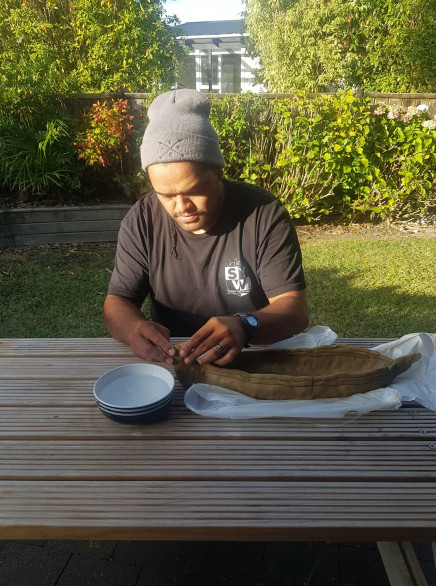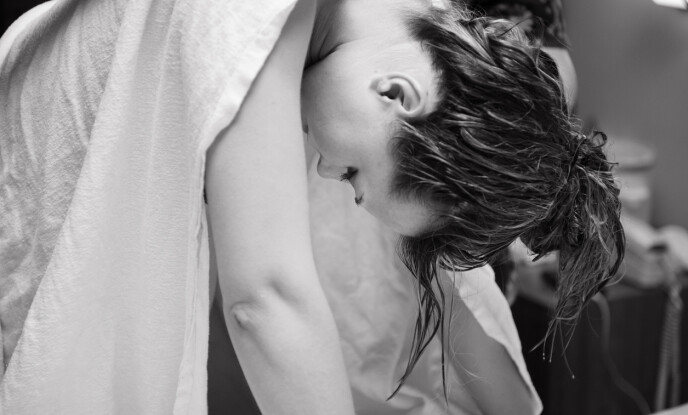Stage 1: Getting ready
The first stage of labour is all about your body getting ready to give birth.
Am I in labour?!
It may seem like a silly question – but it’s really not. If you’re a first-time mum, it’s very normal not to know what to expect.
That’s why you have your lead maternity carer (LMC) and organisations like Plunket to support you, along with your whānau and friends.
Find out about Plunket’s antenatal classes.
Early labour: ‘Warming up’
This is your body starting the labour process, and it all begins hormonally with oxytocin – the love hormone. This stage can last several days.
Try to stay relaxed. To make this stage a bit more comfortable, you might find it helpful to:
- go for a walk
- meditate or do relaxing breathing techniques
- take a shower or bath
- change positions.
Here are some signs that your body is starting early labour:
- a ‘show’. As your cervix begins to open, you might notice a thick discharge comes out of your vagina. This can be clear, bloody or brown in colour and will feel thick and sticky. This was the mucus plug that sealed the entrance to your womb – helping to protect your baby from bacteria or infection.
- your ‘waters break’ – this could be a slow leak or a big gush of liquid out of your vagina (it will smell different to wee). Contact your LMC when this happens, and:
- Check the colour of the water to see if it looks dirty, or greenish or brown in colour. This may be meconium, your baby’s first poo, which can be a sign that baby’s in distress.
- you’re getting cramps low down in your tummy, a bit like period pain, or pain in your lower back. These are your contractions starting.
You know labour has begun when your contractions are:
- regular (e.g. happening every five minutes)
- strong (they definitely don’t feel like period cramps anymore!)
- last for about 45-60 seconds, and
- are five minutes apart.
When this starts happening, it’s probably time for you to go to the hospital or birthing centre, or have your midwife come to you if you’re having a homebirth.
What are contractions?
During the first stage of labour, contractions prepare the birth canal for your baby to come out by causing the cervix to open (dilate), soften, shorten and thin.
In the second stage of labour, contractions help you to push your baby out – and in the third stage, they help to push out your placenta.
What do contractions feel like?
- Your tummy tightens and goes hard, and then relaxes.
- At the start contractions feel a bit like period cramps, and last about 20-40 seconds. You might also get pain in your lower back.
- As labour goes on, your contractions will go for longer and get more intense/painful.
Active labour: Increasing intensity
This is when your cervix goes from 4cm to 7cm dilated, and labour gets much more intense.
Your contractions become stronger, closer together and more regular – and you might experience:
- cramping in your legs
- feeling sick/nauseous
- pressure in your back
- your waters breaking – if they haven’t already.
If you want an epidural, this is the best time to do it.
During this stage, you might find it helpful to:
- use mirimiri/massage to help with relaxation
- use a Swiss/birthing ball
- do karakia/prayer and waiata/song
- take a walk (stopping to breathe through contractions)
- take a shower or bath
- change positions
- use a heat pack or hot water bottle.
Transition: Nearly there
The transition phase is when you go from 8cm dilated to fully dilated (10cm) and it’s often the most challenging and intense stage of labour.
Thankfully – it’s generally also the shortest. Transition tends to last between 15 to 60 minutes.
At this stage your contractions will be very close together and may last 60-90 seconds. They will also be at their strongest and most painful.
You might also experience:
- sweating, feeling hot or chilled
- feeling sick/nauseous
- trembling or shaking
- feeling overwhelmed and like you can’t go on without pain relief.
At this stage, it’s generally too late for an epidural – but gas may help if you’re experiencing a slightly longer transition.
During this difficult (but short!) part of labour, you might find it helpful to:
- stay upright (if you haven’t had medical pain relief) – gravity helps
- focus on your breath – keep all your attention on inhaling and exhaling
- have your birth partner close by giving you lots of encouragement
- do karakia/prayer
- make low sounds during contractions – focusing on a sound like “ooh” or “ahh” when you exhale
- pant or blow your way through contractions
- change positions – keep moving to adjust your pelvis to support your baby’s descent.
Take comfort in the fact that labour is at its absolute hardest right before baby’s born.
Keep going – you’re nearly there!
Stage 2: It’s time to push
When your cervix is fully dilated (10cm), it’s time to push your baby into the world.
This stage tends to take one to two hours – but can be shorter or longer.
You might experience:
- feeling calmer and more focused or getting a renewed burst of energy
- a massive surge of oxytocin entering your bloodstream
- an overwhelming urge to push – go with this instinct and work with your contractions
- take a deep breath as the contraction starts and push down (like you’re doing a poo). Keep breathing and pushing until the contraction ends
- try not to yell like they do in the movies – keep that energy inside your body instead, it helps with pushing down
- you might be instructed by your LMC to push more gently at some stages, this is to help avoid perineum damage.
During this stage, you might find it helpful to:
- stick with a position that feels good and try and avoid lying down (work with gravity) – this could be in bed with your back propped up with pillows, standing, sitting, kneeling or squatting
- rest after each contraction – try and breathe deeply and relax.
And then … you’ll have a baby! Congratulations mama, you did it.
Stage 3: The final step
Once your baby’s born, the whenua/placenta will come away from the wall of your uterus.
You’ll have some more contraction to push out the whenua/placenta, but these won’t be as strong as the ones you had during labour.
What to do with your whenua
You’ll be asked what you’d like to do with the whenua/placenta.
Traditionally for Māori, the whenua is buried in a significant place (ancestral land, marae, urupa) to connect the new baby to the land.
Or you may prefer for your LMC to dispose of the placenta/whenua.
The choice is yours.
Did you know … the word “whenua” means ‘placenta’ and ‘land’ in te reo Māori?

Dad making an ipu whenua.
Tips for a positive birthing experience
It’s normal to feel a bit nervous or even scared about birth – especially if you’ve never done it before. But that doesn’t mean you can’t have a wonderful, positive birthing experience.
Here are some things that could help:
- do what’s right for you: A homebirth, traditional Māori birth practices, hypnobirthing, a hospital birth, an epidural – there are lots of ways to give birth, and there is no one “right way” to do it.
- have a great team by your side: It’s important that you trust the people in the birthing room with you. Choose your birthing partner carefully, and if you don’t feel comfortable with your current lead maternity carer (LMC), know that it’s perfectly ok to change LMC partway through your pregnancy. Just try and do this as soon as possible.
- have a plan – but know things might not go to plan: Sometimes birth doesn’t go to plan, and that can be upsetting. Try to be flexible. Having a great team by your side helps you to still feel empowered, even if plans need to change for the safety of you and your baby.
The goal with all of these tips is to help you feel safe and relaxed during birth. Not only does this help your body labour, but it also helps you have a more positive birthing experience.
If you want to change midwives partway through your pregnancy, Find Your Midwife is a great resource.
